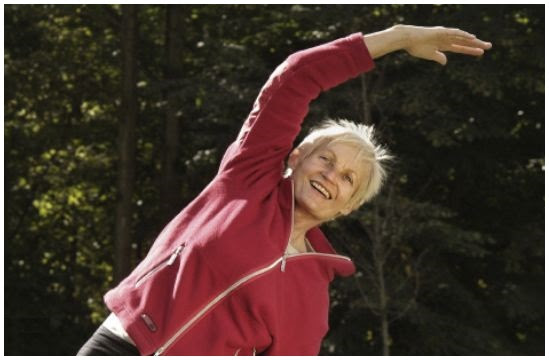How Can Work Affect your Back Pain?
 Back pain is one of the most common reasons people miss work, and it’s no secret that work often contributes to back pain. In recent years, several media outlets have warned the public about the pain and debilitation which results from sitting for too long. But standing for too long also imperils the back, as well as the legs and feet. Chiropractors often treat cashiers, hairdressers, nurses, security screeners, custodians, and other people who are on their feet all day, but preventive measures are necessary to stop the problem from recurring.
Back pain is one of the most common reasons people miss work, and it’s no secret that work often contributes to back pain. In recent years, several media outlets have warned the public about the pain and debilitation which results from sitting for too long. But standing for too long also imperils the back, as well as the legs and feet. Chiropractors often treat cashiers, hairdressers, nurses, security screeners, custodians, and other people who are on their feet all day, but preventive measures are necessary to stop the problem from recurring.
How Standing Affects the Back
Problems in the lower limbs will have consequences further up. When peoples’ feet are painfully swollen or their leg muscles are failing, their posture is likely to get worse. They often subconsciously tilt their pelvises in an attempt to use their back muscles to compensate for tight or overworked muscles in the pelvic region, legs, or core, putting their lower backs out of alignment and increasing wear on their facet joints. Wear to the back muscles also puts uneven pressure on the spinal discs, allowing them to become misshapen and inhibiting their function as shock absorbers.
Good Habits While Standing
Ideally, workers should be able to alternate between sitting and standing throughout the day. It’s good to switch about every half hour. While standing, it may be helpful to put one foot up on a bar. In either position, desk workers should position the top of their screens to be at eye-level and tilted slightly up. They also should also put the keyboard and mouse on the same level and stand about twenty inches away from the screen. Knees should be bent slightly and be positioned directly below the hips.
The Importance of Foot Care
To prevent lower back pain, the feet are especially important to care for. Blood pooling in the lower extremities can lead to vascular problems, which come with their own pain and can encourage bad posture. People with Chronic Venous Insufficiency should consider compression stockings. Many chiropractors now offer customized foot orthotics, which provide the feet with more support, and patients are generally discouraged from wearing flat shoes. Anti-fatigue floor mats have been shown to decrease foot and lower back pain. Patients are also advised to move their feet when turning to reach something, as opposed to twisting their torsos.
How Chiropractic Helps
Chiropractic care will likely include some sort of therapeutic exercise as well as pain relief. Squats are recommended for many patients as a way to strengthen core and leg muscles and to improve hip flexibility. Traction, either with a machine or suspension, can reverse the pressure in spinal discs. Adjustments will put joints back in place, removing pressure from the surrounding muscles and nerves. Therapeutic massages, electric muscle stimulation, and ultrasound therapy also help to reduce muscle inflammation and deliver more nutrient-rich blood to injured soft tissues.
Scott Chiropractic and Wellness
Matthew Scott, DC
5080 Virginia Pkwy Ste 550
McKinney, TX 75071
(972) 540-5445
*****This is not intended to replace the services of a doctor. It does not constitute a doctor-patient relationship. Information in this newsletter/website is for informational purposes only & is not a substitute for professional advice. Please do not use the information contained herein for diagnosing or treating any condition.

 W
W Anything deep-fried in oil can create (or add to) inflammation in your body. Trans-fats can raise your LDL (“bad” cholesterol) and lower your HDL (“good” cholesterol). This can increase your risk for heart disease. So stay away from the French fries and potato chips! They aren’t just bad for your skinny jeans…
Anything deep-fried in oil can create (or add to) inflammation in your body. Trans-fats can raise your LDL (“bad” cholesterol) and lower your HDL (“good” cholesterol). This can increase your risk for heart disease. So stay away from the French fries and potato chips! They aren’t just bad for your skinny jeans…

 The first thing you should do is to apply ice over the painful, swollen areas. You can simply apply a bag of crushed ice over the ankle and use an elastic bandage to secure the ice in place.
The first thing you should do is to apply ice over the painful, swollen areas. You can simply apply a bag of crushed ice over the ankle and use an elastic bandage to secure the ice in place. This talus misalignment will cause pressure between the two lower leg bones. As a result the fibula will splay apart from the tibia. This slight spreading apart of the two lower leg bones will cause significant stress and strain on several of the muscles and supporting soft tissues in the leg and calf.
This talus misalignment will cause pressure between the two lower leg bones. As a result the fibula will splay apart from the tibia. This slight spreading apart of the two lower leg bones will cause significant stress and strain on several of the muscles and supporting soft tissues in the leg and calf.